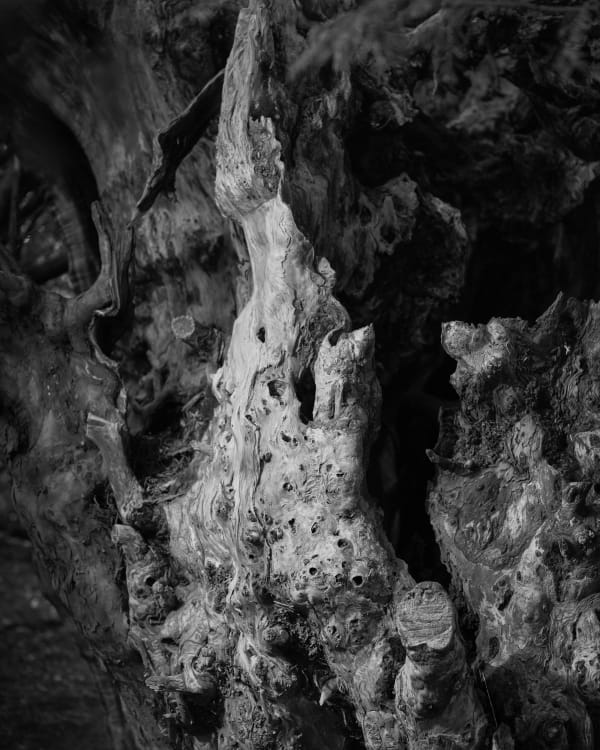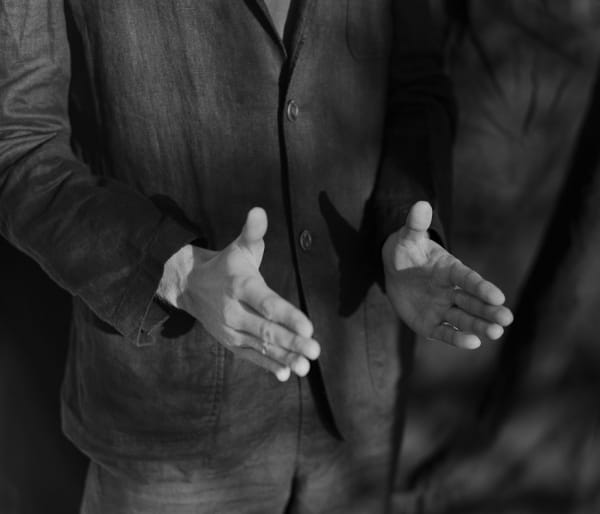-
NEW REPRESENTATION: ANA ZIBELNIK
-
.
Ana Zibelnik (b. 1995, Ljubljana) is an artist based in The Hague, Netherlands. She explores the themes of death, longevity and the perception of time, intersecting them with ecology and reflecting on the current status of humans as actors on this planet. In her latest series Immortality is Commonplace she delves into the relationship between photography and extinction, questioning the role of the medium – defined by its ability to record – in times of ecological instability. Her practice combines a research based approach with poetic interpretation, often drawing inspiration from literature.
On the occasion of PARIS PHOTO and our presentation of Zibelnik on the fair's online viewing rooms, she spoke with us about her practice, what it represents and how she works as a successful emerging artist.
-
How do you choose the subjects of your photography projects?
It is not so much about the choice of subjects as a certain obsession - in this case with the idea of the 'end of the world' and immortality. I see my previous work We Are the Ones Turning as part of the same interest, approached from a different perspective. There, it was about a decidedly human perspective on death and the unique position of humans as mortals and those being aware of it, whereas in my recent work, I am conceptually more focused on temporalities larger than our own; on organisms in nature whose fate is less clearly defined than that of humans. The thought of Slovenian philosopher Alenka Zupančič that sums this up beautifully is that the world will surely end, but it won’t be the end of our troubles.
-
This year you had your first solo exhibition at the Maribor Art Gallery. What does this mean for your work and what role does the medium of exhibition play in your projects?
What meant a lot to me about the UGM exhibition was the fact that it was in Slovenia. Since I moved to the Netherlands immediately after graduating from the Academy of Fine Arts and Design in Ljubljana to do my Master's degree (which coincided with my participation in PARALLEL — European Photo Based Platform), my photographic career has so far taken place abroad. I haven’t had much contact with the local art scene in Slovenia.
The medium of exhibition is important to me especially because of the insights you gain about your work with every new venue. Photographs have a completely different presence in physical spaces than, for example, in a book or online. Especially in a series like Immortality is Commonplace where I combine a lot of different elements (portraits, landscapes, texts), it's always crucial to establish a certain relationship between them through the presentation format.
-
-
Your work is primarily photography, but you also include literature and philosophy. How do the different fields merge in your projects?
Literature has always been a crucial part of my practice. Even while working on less serious projects still during my studies, I often found inspiration in books. On the one hand, it's again a kind of obsession, but also an impulse to inform yourself as well as possible on a certain subject before actually taking any photographs. Reading, underlining and writing out various passages, quotes, etc., has become an essential part of the visualisation of my projects. Through a spectrum of works, whether literary or philosophical, I create a selection of ideas, images, situations, which then form the basis of a series. Often this transmission is not very literal in the sense that my photographs could be understood as illustrations of those ideas. It is more about the atmosphere that is created in this way.
-
What was the Kaunas residency and what did it contribute to your project?
I have been working with Kaunas Photography Gallery for a while now. In 2019, I was part of an exhibition Urgent Arts of Living, curated by Cale Garrido, still within the scope of Parallel. Since then, I have been invited to various workshop organised by the gallery, which never worked out. This year, they initiated a collaboration with the CNA in Luxembourg (Centre national de l'audiovisuel), which owns the collection The Family of Man. On the occasion of Kaunas as European Capital of Culture, they invited Jim Goldberg and Emma Bowkett to mentor two groups of internationally renowned (but also younger) photographers. Since May, we have been working on H — a project that seeks to redefine the notion of humanist photography. A publication featuring our work will be presented for the first time at this year's Paris Photo and officially launched in early December.
Above all, the residency gave me an environment in which I could concentrate fully on my photographic practice. I don't get to do this as often in my normal routine, because I work as a producer for the Dutch photography organisation Paradox at least three days a week. On the other hand, Lithuanian culture feels very close to me. It's hard to describe why exactly, but my way of photographing, and perhaps my interests as well, simply resonate with that environment. Jim's mentoring was also crucial, especially as it was the first time I had ever worked exclusively in portraiture, which is his very much his field. We talked a lot about how much your character influences the kind of photographs you make and how do you choose to spend the time with your subjects - what kind of exchange do you make it.
-
Your work has also been presented in book form - together with Jaka Gerčar, you collaborated on the Day X project, and you are currently working on a more comprehensive publication. What impact does your work have in book form and what are your goals for your future publications?
The book I Saw the Pines Grow which I published with Jaka Gerčar as part of the Day X project focused on the idea of walking. The concept of the series (24-hour collaborations between photographers and writers) was very close to my heart, especially because of the aforementioned intertwining with literature. Jaka's essays, and to a large extent also the works of Marko Uršič with whom we spent the 24 hours in the Karst that August, were at some point very influential for my photography. To have the opportunity as well as the challenge to create something together in such a short time was simply beautiful.
The book as I am approaching it now is something entirely different. It's hard to speculate what the impact my work in this format will be as this will be my first publication of such kind. After years of research on a specific topic, a lot of material accumulates. On the one hand, I wish I could include all the ideas, experiments, texts and, ultimately, the findings of the master's thesis I wrote in 2020 on the relationship between photography and extinction. On the other hand, you need to trust your photographs as well. Finding the right balance between conceptual clarity and room for interpretation can be a lengthy process. In general, I feel closer to photography and photographic publications that are more affective rather than logical. Still, this tendency is sometimes in conflict with my academic background.
NEW REPRESENTATION: ANA ZIBELNIK
Past viewing_room


















